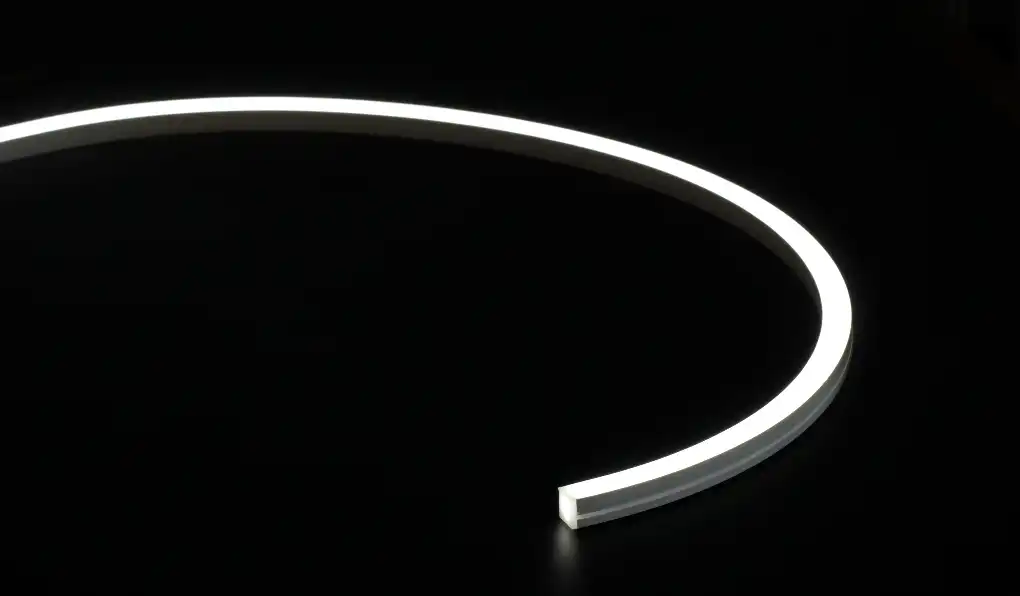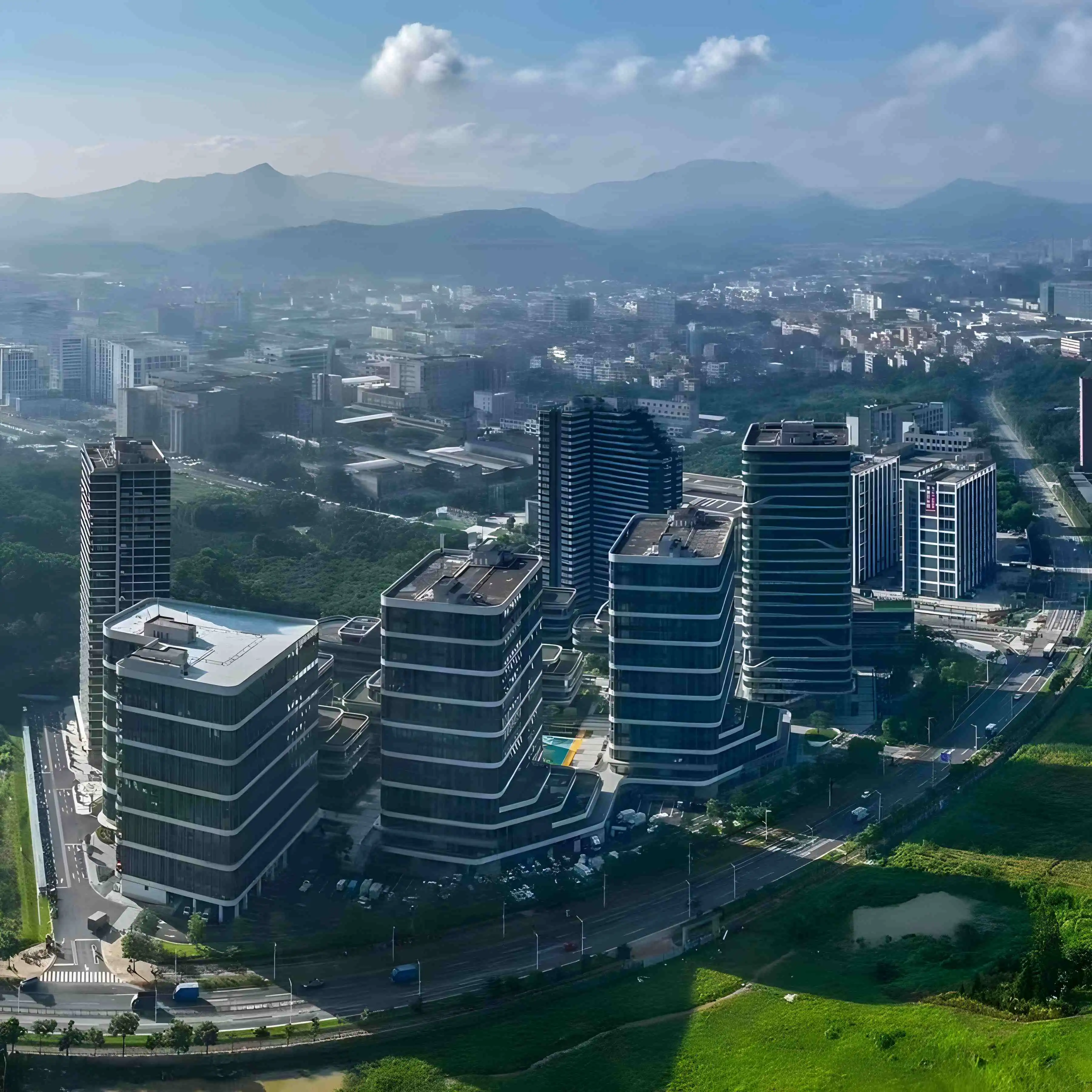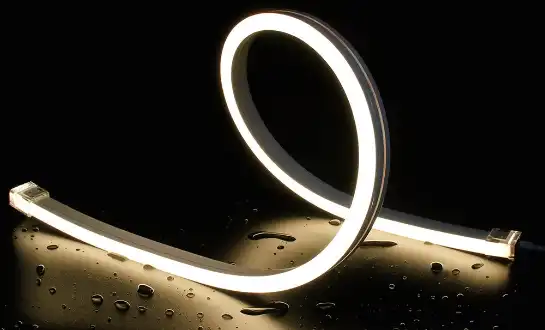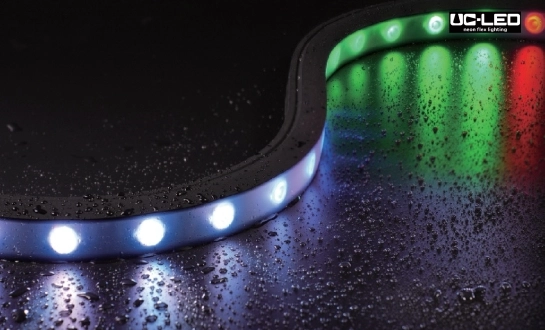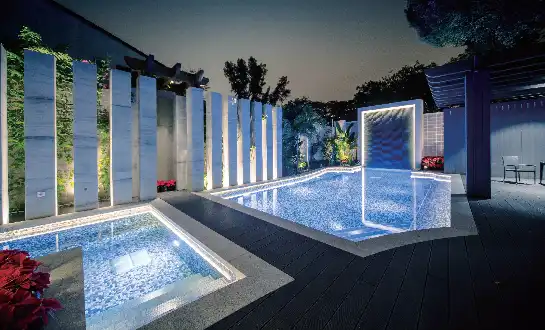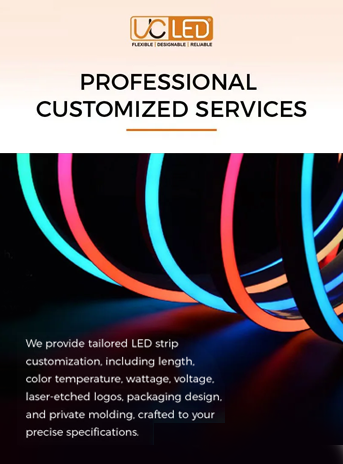Transforming Spaces with LED Neon Flex: Innovative Architectural Applications
Facade Illumination: Bringing Buildings to Life
LED Neon Flex has become a game-changer in facade lighting, offering architects and designers an unparalleled tool to accentuate building features and create dynamic visual experiences. Its flexibility allows for seamless integration along complex architectural contours, highlighting structural elements with precision. Whether outlining windows, emphasizing cornices, or tracing the edges of modern skyscrapers, LED Neon Flex can transform ordinary buildings into breathtaking nighttime landmarks.
The versatility of LED Neon Flex extends beyond mere outline lighting. Innovative designers are using it to create large-scale light art installations on building facades, turning entire structures into canvas for animated light displays. This approach not only enhances the aesthetic appeal of buildings but also contributes to the creation of memorable urban experiences, potentially boosting tourism and local economy.
Interior Design: Crafting Ambiance with Light
In interior spaces, LED Neon Flex serves as a powerful tool for creating ambiance and defining spaces. Its ability to produce soft, diffused light makes it ideal for indirect lighting applications, such as cove lighting in residential and commercial interiors. By tucking Flexible LED Neon into architectural recesses, designers can achieve a sophisticated, layered lighting effect that enhances spatial perception and adds depth to rooms.
Beyond functional lighting, LED Neon Flex is increasingly being used as a decorative element in its own right. From creating glowing art installations to fashioning illuminated furniture pieces, the possibilities are limited only by imagination. In hospitality settings, such as hotels and restaurants, custom-shaped LED Neon Flex fixtures can serve as striking focal points, contributing to the establishment's unique identity and atmosphere.
Landscape Integration: Illuminating Outdoor Spaces
The weatherproof nature of LED Neon Flex makes it an excellent choice for outdoor architectural lighting applications. In landscape design, it can be used to outline pathways, highlight water features, or accentuate garden structures. Its ability to withstand various weather conditions ensures long-lasting performance in outdoor environments.
Particularly noteworthy is the use of LED Neon Flex in creating immersive light experiences in public spaces. Parks and plazas are being transformed into nighttime wonderlands with interactive light installations that respond to movement or sound, encouraging public engagement and creating new forms of urban art. This fusion of technology and design not only enhances public safety through improved lighting but also fosters a sense of community and wonder in shared urban spaces.
The Advantages of LED Neon Flex in Architectural Lighting Design
Energy Efficiency and Sustainability
One of the most significant benefits of LED Neon Flex in architectural lighting is its remarkable energy efficiency. Compared to traditional neon or incandescent lighting systems, LED technology consumes substantially less power while delivering equivalent or superior luminosity. This efficiency translates into significant energy savings over time, making LED Neon Flex an environmentally responsible choice for large-scale architectural projects.
The sustainability benefits extend beyond energy consumption. LED Neon Flex has a longer lifespan than traditional lighting options, often lasting up to 50,000 hours or more. This longevity reduces the frequency of replacements, minimizing waste and the environmental impact associated with manufacturing and disposing of lighting products. Additionally, LED Neon Flex contains no harmful substances like mercury, making it safer for both handlers and the environment.
Flexibility and Customization
The inherent flexibility of LED Neon Flex opens up a world of design possibilities that were previously challenging or impossible with rigid lighting systems. Its ability to bend and conform to various shapes allows architects and designers to create custom lighting solutions that perfectly complement the architectural features of a building. This flexibility is particularly valuable in projects involving curved surfaces or intricate designs where traditional lighting options would fall short.
Customization extends beyond physical flexibility to color options and lighting effects. LED Neon Flex is available in a wide range of colors, including RGB models that can produce millions of color combinations. This versatility allows for dynamic lighting schemes that can change colors or patterns, adding an interactive and ever-changing element to architectural designs. Whether it's creating a subtle mood lighting or a vibrant, attention-grabbing display, LED Neon Flex can be tailored to meet specific aesthetic requirements.
Durability and Low Maintenance
LED Neon Flex is engineered to withstand the rigors of both indoor and outdoor environments. Its robust construction, typically encased in a durable silicone or PVC housing, provides excellent protection against moisture, dust, and impact. This durability makes it suitable for a wide range of applications, from interior accent lighting to exposed outdoor installations, ensuring consistent performance regardless of the environmental conditions.
The low maintenance requirements of LED Neon Flex contribute significantly to its appeal in architectural lighting. Unlike traditional neon, which can be fragile and prone to breakage, LED Neon Flex is highly resistant to damage. This robustness, combined with its long lifespan, means less frequent repairs and replacements, reducing long-term maintenance costs and minimizing disruptions to the lighting design. For large-scale architectural projects or installations in hard-to-reach areas, this low-maintenance characteristic is particularly valuable, ensuring that the lighting continues to enhance the building's aesthetics without constant upkeep.
Best Practices for Implementing LED Neon Flex in Architectural Projects
Planning and Design Considerations
Successful implementation of LED Neon Flex in architectural lighting begins with meticulous planning and design. The first step is to conduct a thorough site analysis, taking into account the building's architecture, surrounding environment, and desired lighting effects. This analysis should inform decisions about color temperature, brightness levels, and placement of the LED Neon Flex to achieve the desired aesthetic and functional outcomes.
Collaboration between lighting designers, architects, and electrical engineers is crucial during the planning phase. This interdisciplinary approach ensures that the lighting design not only complements the architectural vision but also integrates seamlessly with the building's electrical systems. Consideration should be given to factors such as power distribution, control systems, and accessibility for future maintenance. Additionally, creating detailed lighting plans and 3D visualizations can help stakeholders better understand the proposed design and make informed decisions before installation begins.
Installation Techniques for Optimal Performance
Proper installation is key to maximizing the performance and longevity of Flexible LED Neon in architectural applications. One critical aspect is ensuring proper mounting and support. While the flexibility of LED Neon Flex is an advantage, it's important to provide adequate support to prevent sagging or deformation over time. This can be achieved through the use of specialized mounting clips or channels designed specifically for LED Neon Flex.
Attention to detail in the installation process is paramount. This includes carefully planning the routing of power cables to minimize visibility, ensuring proper sealing at connection points to maintain the IP rating, and allowing for thermal expansion and contraction in outdoor installations. For complex designs or large-scale projects, it may be beneficial to create a mock-up or small-scale test installation to identify and address any potential issues before full implementation.
Maintenance and Troubleshooting Tips
While LED Neon Flex is known for its low maintenance requirements, implementing a proactive maintenance strategy can further extend its lifespan and ensure optimal performance. Regular inspections should be conducted to check for any signs of damage, loose connections, or degradation in light output. In outdoor installations, periodic cleaning may be necessary to remove dust or debris that could affect the lighting quality.
When troubleshooting issues with LED Neon Flex, a systematic approach is recommended. Common problems such as sections not lighting up can often be traced to power supply issues or loose connections. Having a clear understanding of the wiring diagram and control system is essential for efficient troubleshooting. For complex systems, consider implementing a remote monitoring solution that can alert maintenance teams to potential issues before they become noticeable, ensuring consistent performance and minimizing downtime.
Conclusion
LED Neon Flex has emerged as a transformative technology in architectural lighting, offering a unique combination of flexibility, energy efficiency, and visual impact. Its ability to seamlessly integrate with various architectural styles and create dynamic lighting effects makes it an invaluable tool for designers and architects alike. As the technology continues to evolve, we can expect even more innovative applications in the field of architectural lighting.
For those looking to explore the possibilities of LED Neon Flex in their architectural projects, QUAN HE Lighting Co., Ltd. offers a wide range of high-quality LED Neon Flex products and customization services. With our expertise in innovative lighting solutions, we can help bring your architectural lighting visions to life. For more information or to discuss your project needs, please contact us at Linda@uc-led.com.
